

|
Back to |
| The Front Page |
| News & Features |

|
Serious Croquet: gifting the American sport |
||||||
|
editing and captions by Bob Alman photographs by Bob Chilton book text excerpts by Johnny Osborn layout by Reuben Edwards Posted April 2, 2012
|
||||||
|
||||||
Bob Chilton is a wealthy Texas who learned film photography in high school and in his retirement years cultivated a sophisticated mastery of photography. He lovingly applies this skill in pictures taken over several years at major East Coast venues in the US, and with the help of Johnny Osborn's rhapsodic text has merged his two favorite hobbies into a single oversized volume of striking photographs. Avoiding the cliches of most mainstream photographers of the sport, he concentrates on portraits of tournament players taken at unexpected non-playing moments. Although the volume includes archival photos of other artists, we've chosen a selection of Chilton photographs that reflects American croquet today but also familiar aspects of the sport in many countries. Chilton's Photoshopping, deleting distracting details, tends to make the central figures linger in the mind's eye. He has donated all the proceeds of this book to the USCA and the Croquet Foundation of America, owners of the unique 12-court headquarters facility known as the National Croquet Center in West Palm Beach.
There are no captions in Chilton's book, though the figures are identified in an index, and John Osborn's poetic prose ripples throughout the oversized volume. Here are some excerpts from Osborn's writing, to help frame our selection of Chilton photos.

|
| John Osborn, son of the founder of the USCA, author or co-author of several books, is the croquet pro at the Mar-a-Lago club in Palm Beach and one of the most popular tournament directors in America. Here he waits to record new scores into his computerized tournament schedule at a major event. |
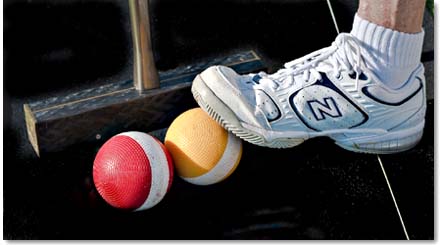
|
Even today it is a wonderful expression to witness; that look from a temporary friend sharing borrowed time as you wait for the boarding of your flight. At the bar, you have just explained that you are off to participate in a croquet tournament. Knowing the next series of questions, and to break the awkward silence, you explain that 'no' there is no prize money and 'yes' you do actually have a full time job. You offer some casual details, such as how long you have played, what it is all about and, if you are lucky enough to know how to phrase the answer, why you enjoy it so much. Sometimes there are verbal questions to follow and sometimes simply a nod. There is almost always, though, within the eyes of your new acquaintance, that look of a deer mesmerized by the headlights.
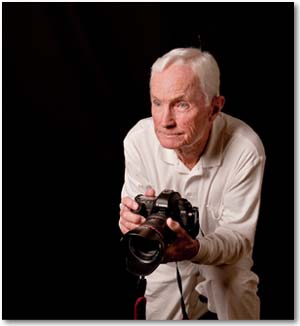
|
| Chilton learned to play USCA croquet in Dallas and its environs. But as a devotee of serious croquet, he plays in many of the major sanctioned tournaments in the US, where he took the photos in the book and in this article. |
In fact, there is no such thing as the average croquet enthusiast. Employed, unemployed, retired or returning for a senior year of college, wealthy or not, looks vary and the lives led beyond the boundary lines of the lawns run the full spectrum. Upon a croquet lawn, perhaps more so than anywhere else, everyone is equal. Whether your opponent is a pharmacist or a farmer, it's a simple lesson learned by many new to competitive croquet: never underestimate your opponent, and never judge the foe by whatever cover is shown.
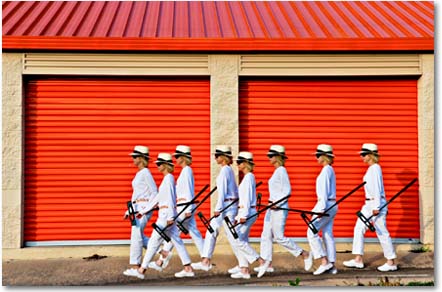
|
| Carrie Shapiro strolls past a storage facility on the way to her morning game. |
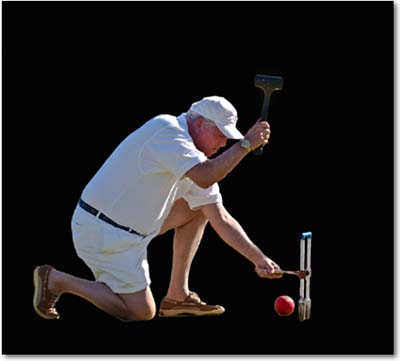
|
| Somebody has to set the hoops tight and straight. Here Stewart Jackson is determined to do it right. |
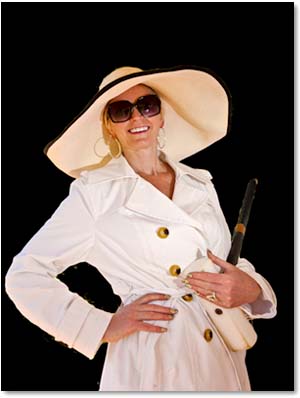
|
Sandy Walsh believes it's just as important to look good as to play well. She does both. |
| Anders Theiste is a serious player who brings his own personal style to the game. | 
|
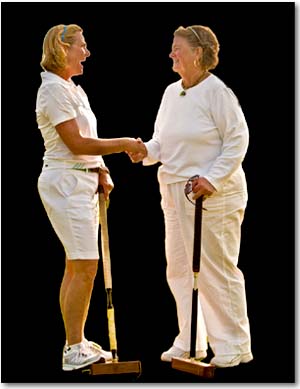
|
Julie Rugart and Jane Simons are delighted to meet again at this major event early in the season. They are about to embark on a contest that will incur major deadness on both sides. |
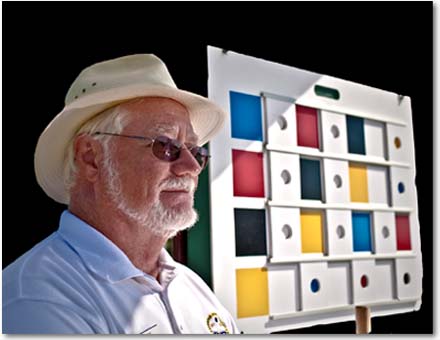
|
| It helps when somebody volunteers to keep the board. In this case, it's Don Finch. |
| Partners need to agree on situational tactics, as Peter Just and Bill Martin are doing here in Senior Doubles. In Association Croquet, partners might have a reasonable choice of three. But in American rules, the added complication of more than three thousand combinations of carry-over deadness puts many more choices into the intense discussion that finally produces partnership accord. | 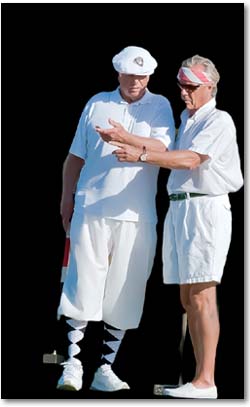
|
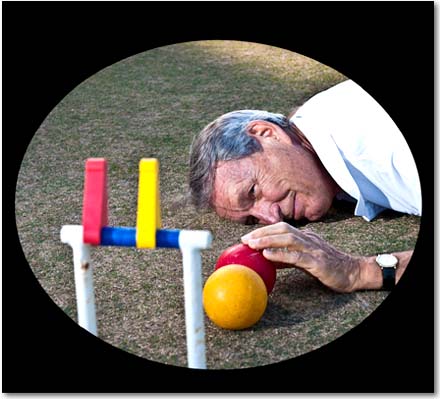
|
| Top-flight competitor David McCoy knows there's no excuse for not lining up a peel perfectly, even when it means getting down on the ground and risking grass stains on your whites. |
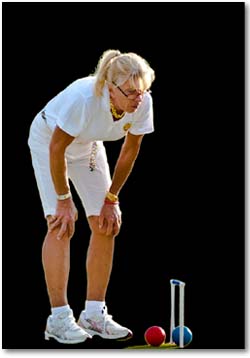
|
If a certified referee is needed, Donna Dixon is willing to be called. |
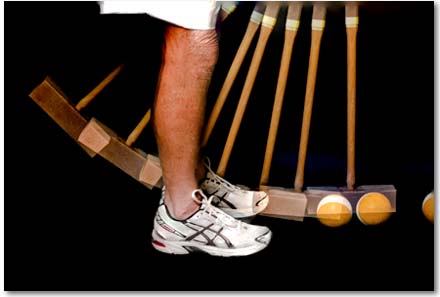
|
| A good stroke is a joy to behold, especially in stop-action. |
| Derek Wassink couldn't possibly be in a tight match. His expression reveals the kind of satisfaction one feels after making a killer leave in last turn with a 20 to 2 lead and sitting down to watch the hapless opponent attempt a series of unlikely miracle plays. Perhaps Chilton put the corner flags into the picture to signal that kind of finish. | 
|
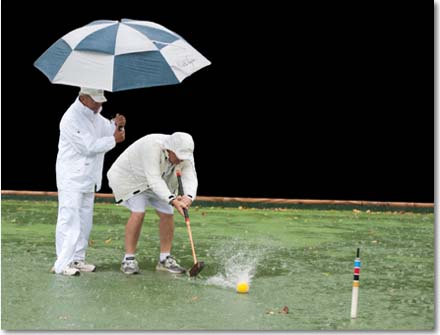
|
| Serious croquet cannot be played in standing water, and Bob Chilton admits that this shot was a set-up: "At last year's Texas Classic the heavens opened and play had stopped to let the court drain, but I talked Bob Knowlton into taking one more shot for the camera." |

|
| When the sun begins to sink below the horizon, you know it's time to end the game. |
Copyright 2012 Bob Chilton
No photograph in this article may be copied in any form without the express permission of the photographer.
